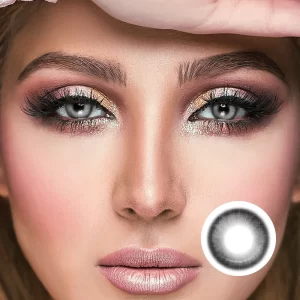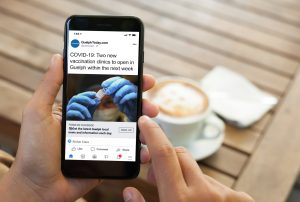People with myopia can see nearby objects clearly, but distant objects appear blurry. The condition occurs when the eyeball is slightly elongated, causing light to focus in front of the retina instead of directly on it. Myopia is a very common condition and its prevalence has been increasing in recent years, especially in urban areas with a high prevalence of near work (such as reading and using electronic devices). The exact cause of myopia is not fully understood, but both genetic and environmental factors play a role, in which Myopia Profile performs an assessment and control for managing the eye condition.
Myopia comprehensive assessment
Myopia profile is a comprehensive assessment of an individual’s myopia (nearsightedness) condition. It goes beyond just determining the person’s prescription for corrective lenses and involves a more detailed analysis of various aspects associated with the progression and management of myopia. A myopia profile typically includes the following components:
- Refractive prescription. It is the standard measurement of the person’s nearsightedness, usually expressed in diopters (D), which indicates the strength of the corrective lenses needed to provide clear vision.
- Axial length. Axial length is the measurement of the length of the eyeball from the front (cornea) to the back (retina). Longer axial lengths are often associated with higher degrees of myopia and increased risk of complications.
- Corneal curvature. The cornea’s curvature affects how light is refracted as it enters the eye. This measurement can impact the overall prescription and be relevant in assessing the suitability for certain corrective procedures like LASIK.
- Visual acuity. Visual acuity is a measurement of how well a person can see at a specific distance. It’s typically measured using an eye chart and helps determine the severity of myopia.
- Myopia progression. Monitoring how a person’s myopia changes over time is important, especially in children and adolescents, as myopia tends to worsen during these years. A myopia profile may include tracking changes in prescription, axial length, and other factors to assess progression.
- Risk assessment. Some myopia profiles include an assessment of the individual’s risk factors for potential complications associated with high myopia, such as retinal detachment, glaucoma, and myopic macular degeneration.
- Treatment strategies. Based on the myopia profile, eye care professionals can recommend personalized strategies to manage myopia progression. These might include options, such as specialized contact lenses, orthokeratology, atropine eye drops, or lifestyle adjustments.
- Family history. Since myopia has a genetic component, a family history of myopia can provide valuable insights into an individual’s risk of developing the condition and the potential rate of progression.
- Lifestyle factors. Lifestyle factors, such as time spent outdoors, near-work activities (reading, using digital devices), and overall screen time can influence myopia progression. These factors may be considered in creating a myopia management plan.
A comprehensive examination is important for children, as early intervention can help slow down the progression of myopia and reduce the risk of associated complications.






